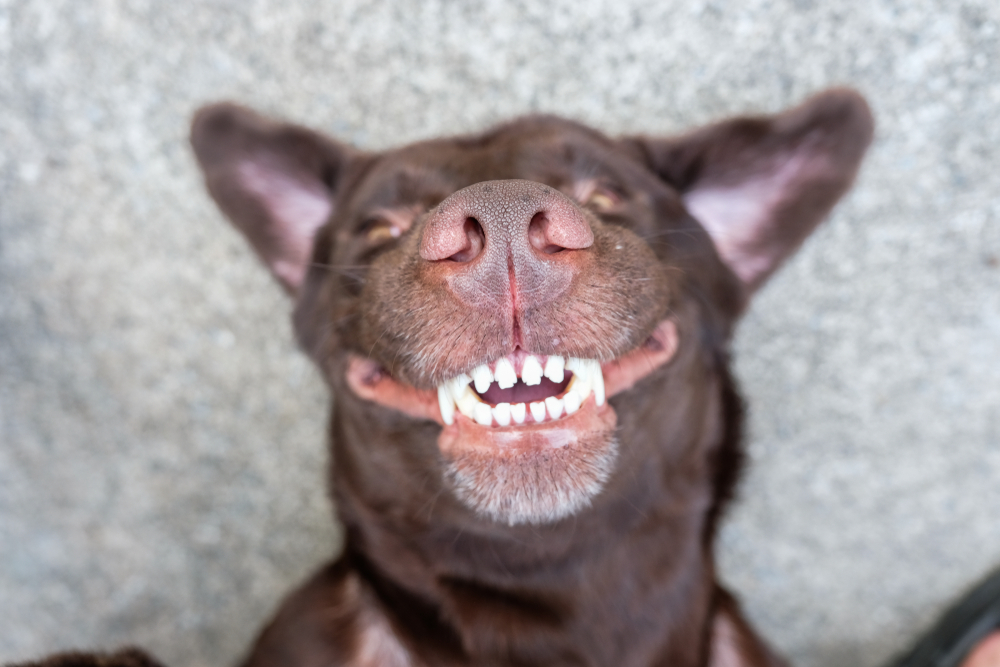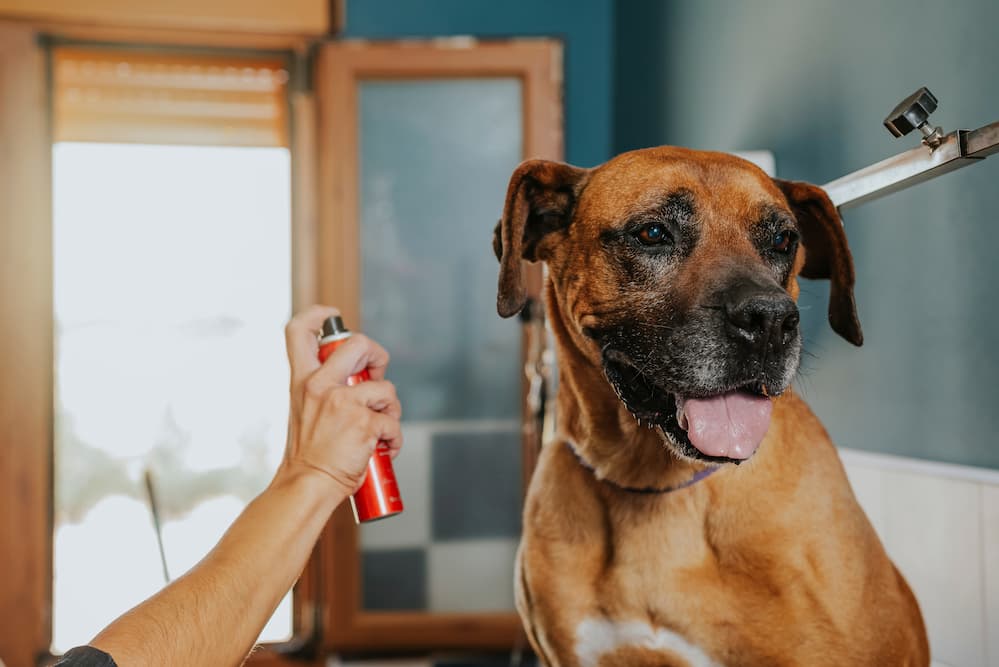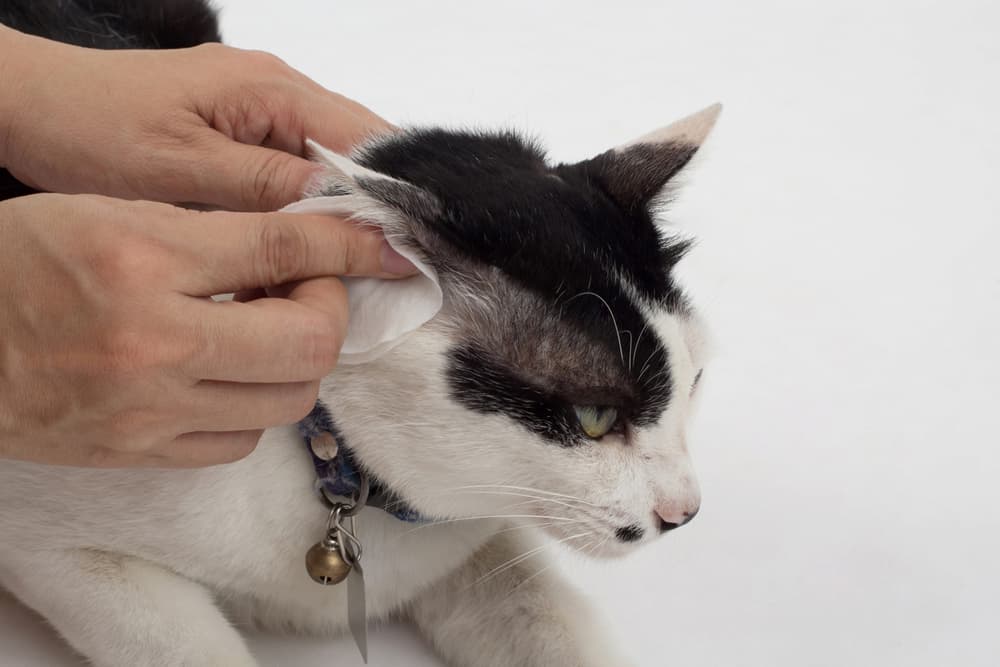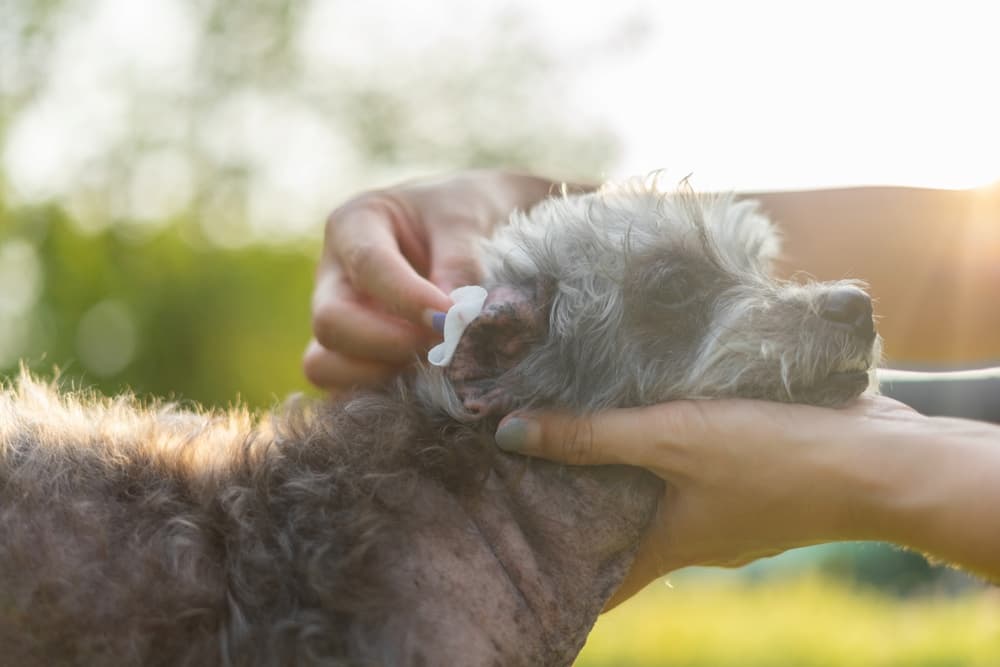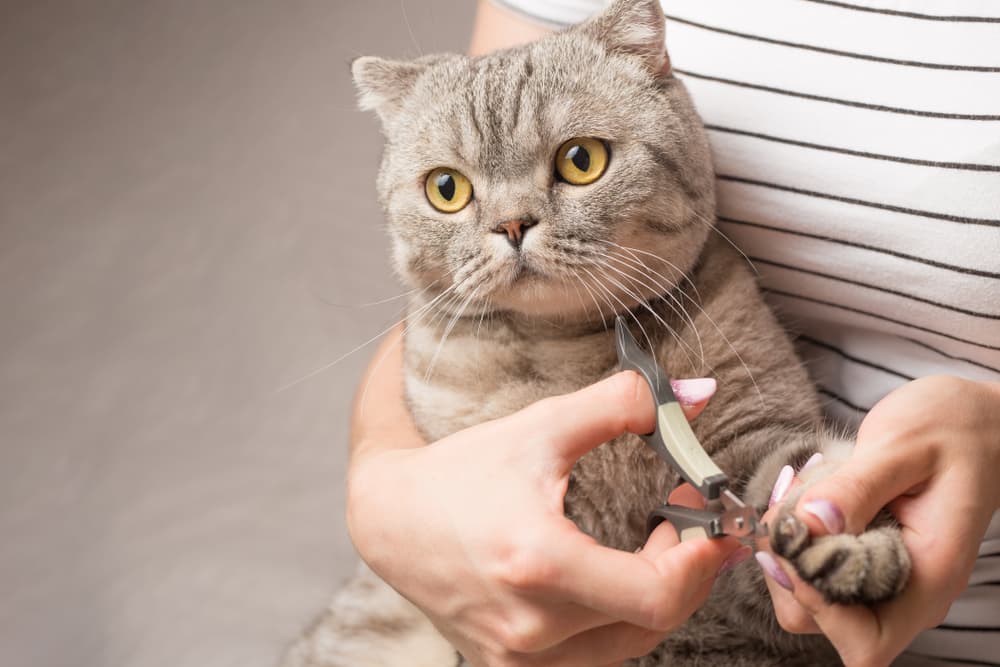10 Dog Toothbrush Picks Approved by Vets
Updated on November 18, 2024
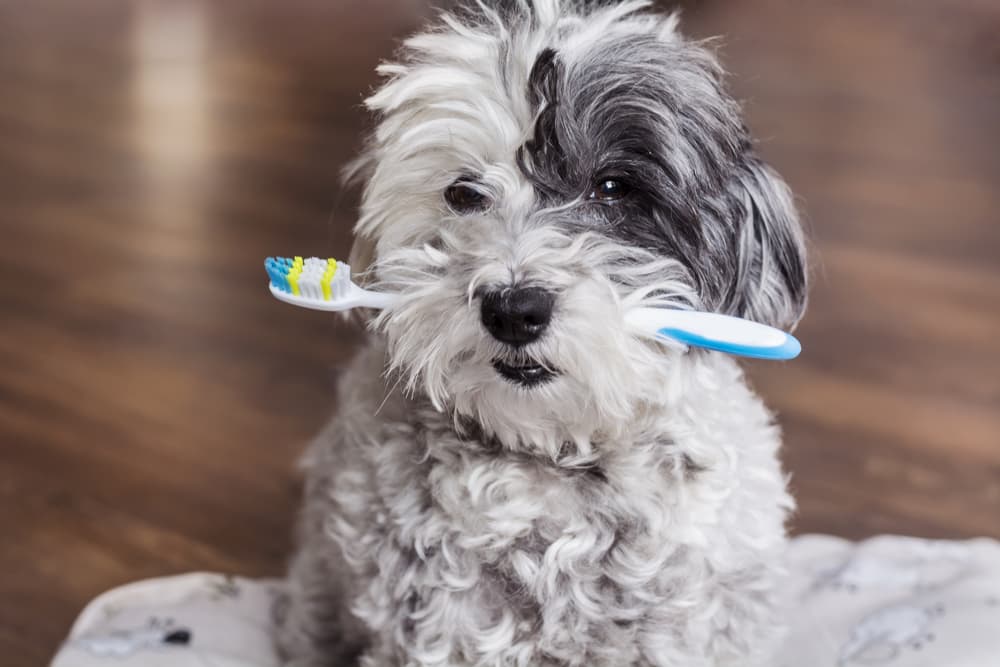
By the time a dog reaches three, there’s a good chance signs of periodontal disease have started to develop. Periodontal disease can lead to tooth damage, decay, and overall health issues, and it’s often responsible for that stinky dog breath.
Good oral hygiene (which includes a regular dog teeth cleaning regimen) can help prevent this.
Though brushing dog teeth can be unpleasant for both you and your pup, using the right toothbrush can make a difference. With that in mind, we’ve recommended dog toothbrush picks that we believe can best prevent dental disease while making your job easier. It’s always a good idea to check with your veterinarian if you have questions about how to brush your dog’s teeth.
Our Top Picks
All featured products are chosen at the discretion of the Vetstreet editorial team and do not reflect a direct endorsement by the author. However, Vetstreet may make a small affiliate commission if you click through and make a purchase.
- Overall Best Dog Toothbrush: Vetoquinol Enzadent Dual-Ended Toothbrush Kit
- Best Dog Finger Toothbrush: Bodhi Gentle Disposable Dog Toothbrushes
- Best Dog Toothbrush and Toothpaste Kit: Virbac C.E.T. Oral Hygiene Kit
- Best Value Dog Toothbrush: Pet Republique Dog Toothbrush Set of 6
- Best Large Dog Toothbrush: Woobamboo Soft Dog Toothbrush for Large Breeds
- Best Small Dog Toothbrush: Arm & Hammer for Pets Spectrum 360 Degree Dog Toothbrush for Small Dogs and Puppies
- Best Disposable Dog Toothbrushes: Vet’s Best Dental Care Finger Wipes
- Best Puppy Toothbrush: Nylabone Advanced Oral Care Puppy Dental Kit
- Best Finger Toothbrush for Puppies and Small Breeds: Jasper Dog Finger Toothbrush
- Best Dog Toothbrush Alternative: Oravet Dental Hygiene Chews for Dogs
10 Top Vet-Approved Dog Toothbrush Picks
We’ve outlined some of the most important features to look for when choosing a toothbrush for dog teeth cleaning. Also ask your veterinarian for recommendations suited to your dog.
Overall Best Dog Toothbrush
Our Pick: Vetoquinol Enzadent Dual-Ended Toothbrush Kit
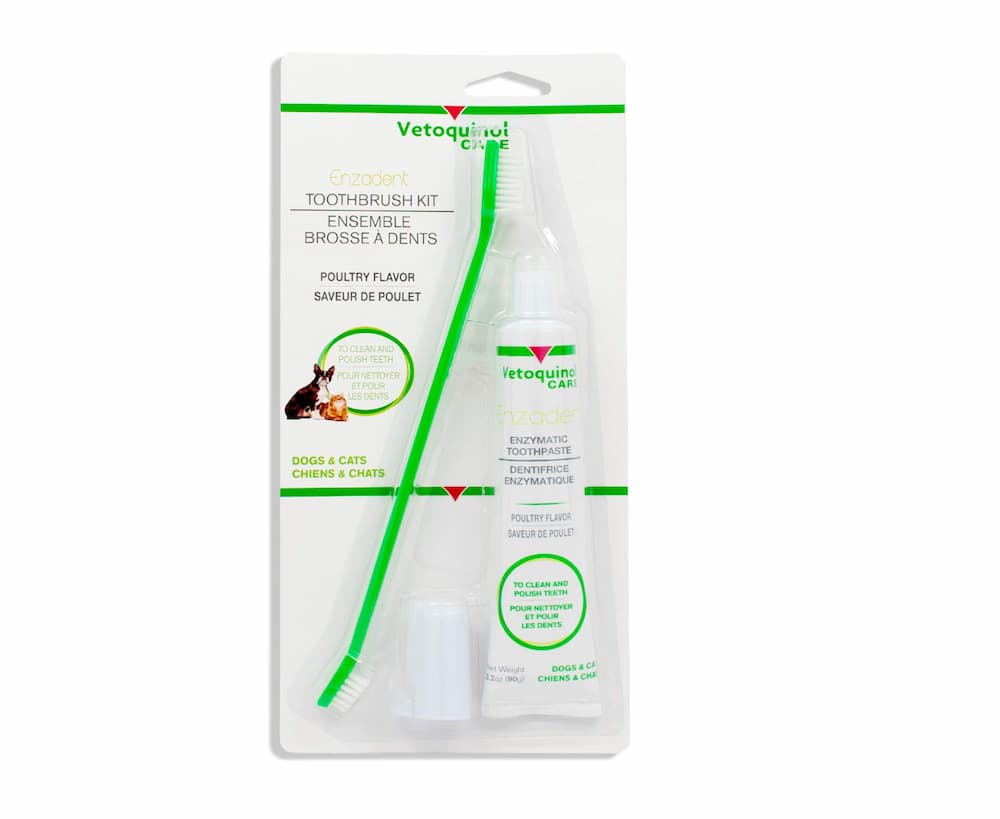
This customer favorite has dual brush heads – one small and one large – for reaching all dog teeth. If you have two dogs of varying sizes, it eliminates the need to buy separate toothbrushes. Both sides are slightly angled, which makes it easier to reach hidden crevices. The bristles are soft (a feature recommended by veterinarians) to prevent gumline damage and make the experience more enjoyable for your dog.
It’s made by Vetoquinol, a family-owned company founded in 1933. They partner with veterinarians and animal health professionals to create a line of pet health care products. We chose it as the best toothbrush for dog oral care because it checks all the boxes for a high-quality product from a trusted company.
Highlights
- The Enzadent toothbrush has dual heads to reach all surfaces. It also eliminates the need for multiple toothbrushes in multi-pet homes.
- It has soft bristles, which veterinarians say is an essential feature in dog toothbrushes.
- It’s manufactured by Vetoquinol, an animal healthcare company formed in 1933.
- It’s a highly-rated favorite that customers say is ease to use.
Things to Consider
- The toothbrush is available in one color, which can make it more difficult to assign toothbrushes in multi-pet homes.
Best Dog Finger Toothbrush
Our Pick: Bodhi Gentle Disposable Dog Toothbrushes
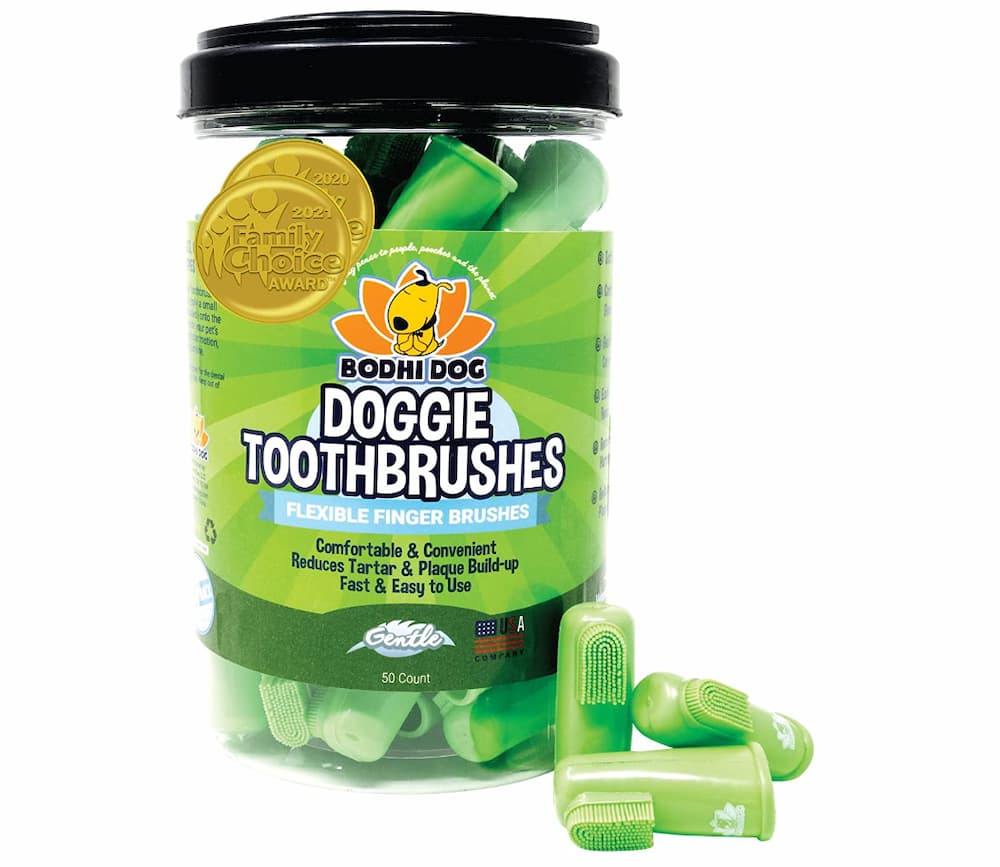
While dog toothbrushes are considered the gold standard for removing plaque, a dog finger toothbrush can be a good option for quicker cleanings or for pups who won’t tolerate brushing. Bodhi disposable dog toothbrushes have soft, flexible silicone bristles and are appropriate for dogs of all sizes. Customers say they offer better control and are easier to use than standard dog toothbrushes. Another plus is the convenience factor – they can be tossed after one use, though the manufacturer says they can be used up to six times.
They’re made by Bodhi, a small, family-owned business that sources its ingredients from the U.S. and local companies when possible.
Highlights
- The convenience factor. Just toss it after cleaning your dog’s teeth.
- They can be easier to handle than a standard toothbrush for dogs.
- They’re manufactured by Bodhi, a small family business.
Things to Consider
- Finger brushes are not quite as effective in removing plaque from under the gumline as regular toothbrushes are.
- Though they’re flexible, they come in one standard size, so they may not fit all fingers.
- Because they’re disposable, they’re not as eco-friendly as standard toothbrushes.
Best Dog Toothbrush and Toothpaste Kit
Our Pick: Virbac C.E.T. Oral Hygiene Kit
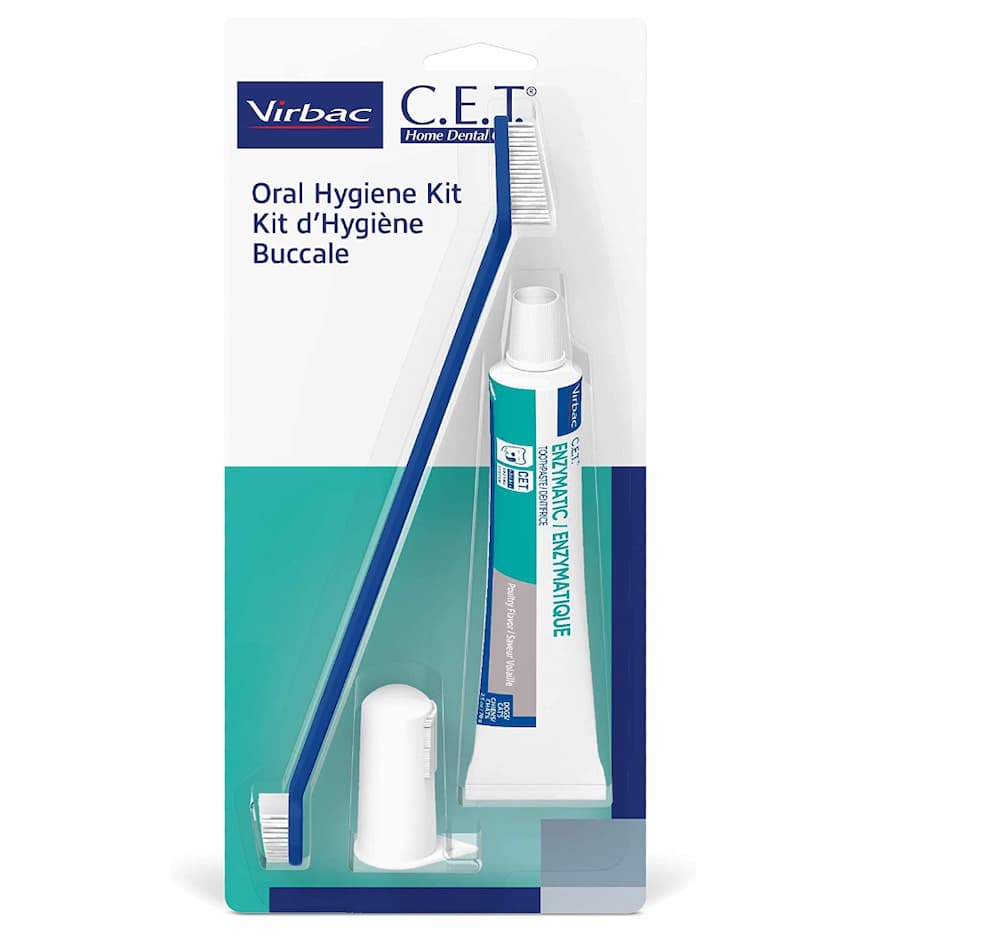
The Virbac C.E.T. toothbrush receives high marks for its dual brush heads and elongated handle designed to facilitate more effective cleaning. The dog toothbrush kit also includes a finger brush for quicker cleanings, and poultry-flavored enzymatic toothpaste.
It’s made in the U.S. by Virbac, an animal health company established in 1968.
Highlights
- The toothbrush has dual brush heads and an elongated handle.
- The enzymatic toothpaste is poultry-flavored.
- The kit includes a dog finger toothbrush.
- It’s made in the U.S. by Virbac, an animal health product company founded in 1968.
- One of the best rated dog toothbrush brands (and best dog toothpastes, too).
- We like that this kit gives you both the dog toothbrush and toothpaste.
Things to Consider
- The kit is a bit pricier than some of the others listed.
Best Value Dog Toothbrush
Our Pick: Pet Republique Dog Toothbrush Set of 6
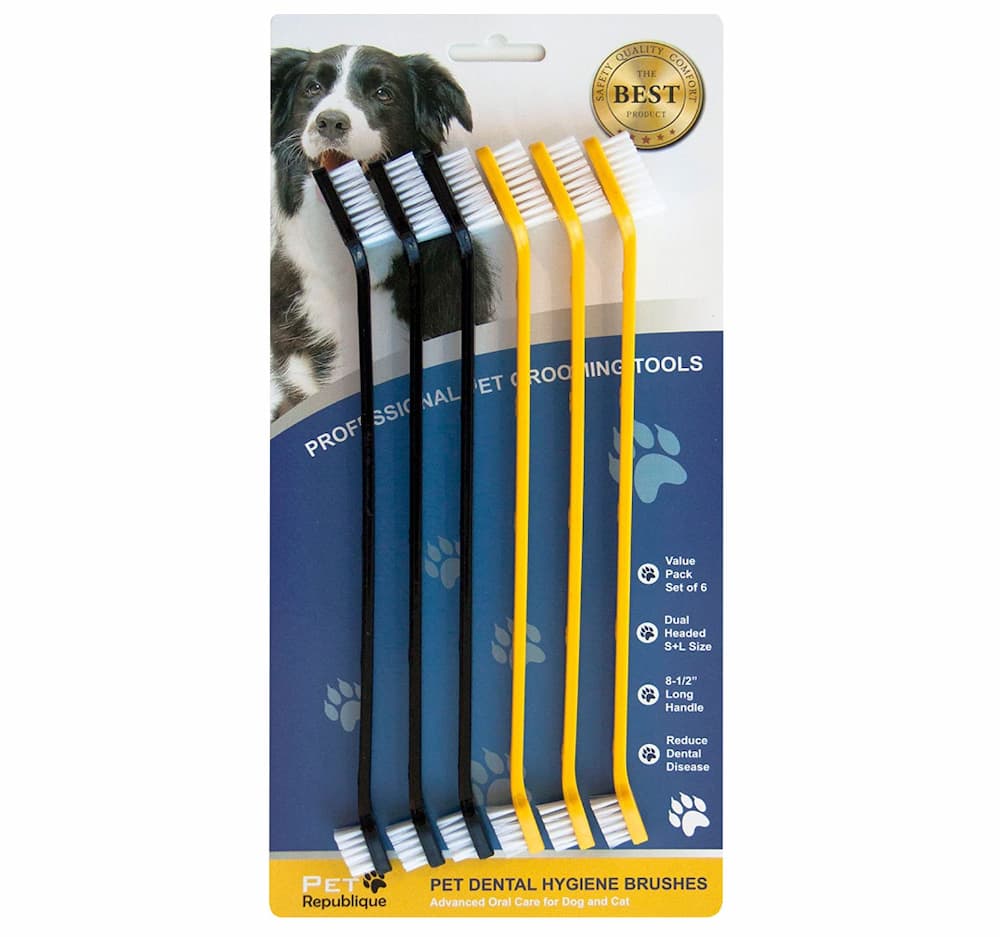
This dual-headed brush (in large and small) has a long, narrow handle to make it easier to access all teeth. It contains 6 toothbrushes, designed to last about a year (based on daily brushing). They also come in two colors, which is helpful if you have more than one dog and want to assign each their own brush.
Added bonus: Pet Republique is a small business that donates 15 percent of profits to the American Animal Rescue Society, an organization that rescues stray pets.
Highlights
- The toothbrush has dual heads.
- The set is priced at about $9 for six toothbrushes, which should last about a year.
- Pet Republique is a small company that donates a portion of its profits to animal rescue.
Things to Consider
- Some reviewers mentioned that the bristles were not as soft as anticipated.
Best Large Dog Toothbrush
Our Pick: Woobamboo Soft Dog Toothbrush for Large Breeds
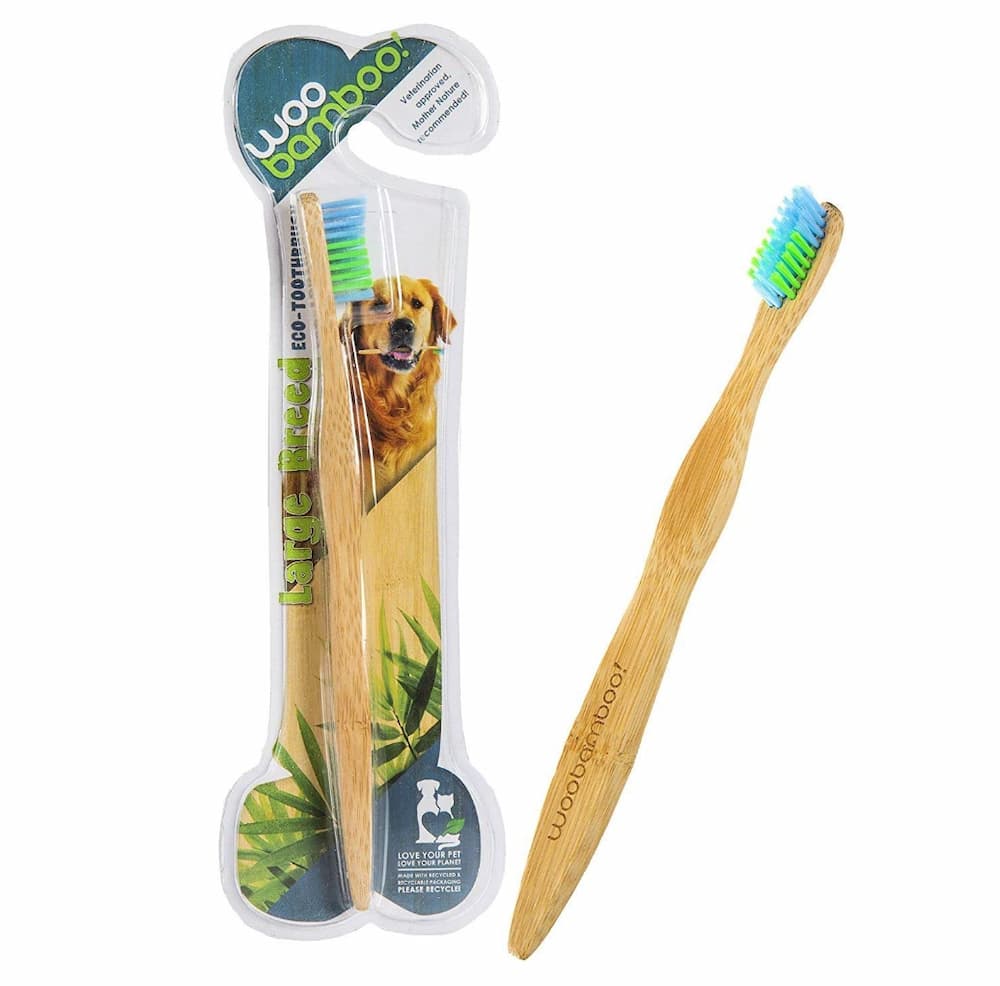
The brush handles are made of sturdy, naturally-grown bamboo. And since it doesn’t contain glues, paint, or other potential toxins, it’s safe if your dog decides to chomp down on it. Woobamboo is a small business that has been making toothbrushes for about 10 years. They also partner with rePurpose Global to help fund the removal of plastics from the environment.
Highlights
- It has a sturdy bamboo handle.
- It’s made without glues, paints, and other potential toxins.
- Woobamboo is a small business that helps fund plastic removal from the environment.
Things to Consider
- It has just one brush head.
Best Small Dog Toothbrush
Our Pick: Arm & Hammer Spectrum 360 Degree Dog Toothbrush for Small Dogs
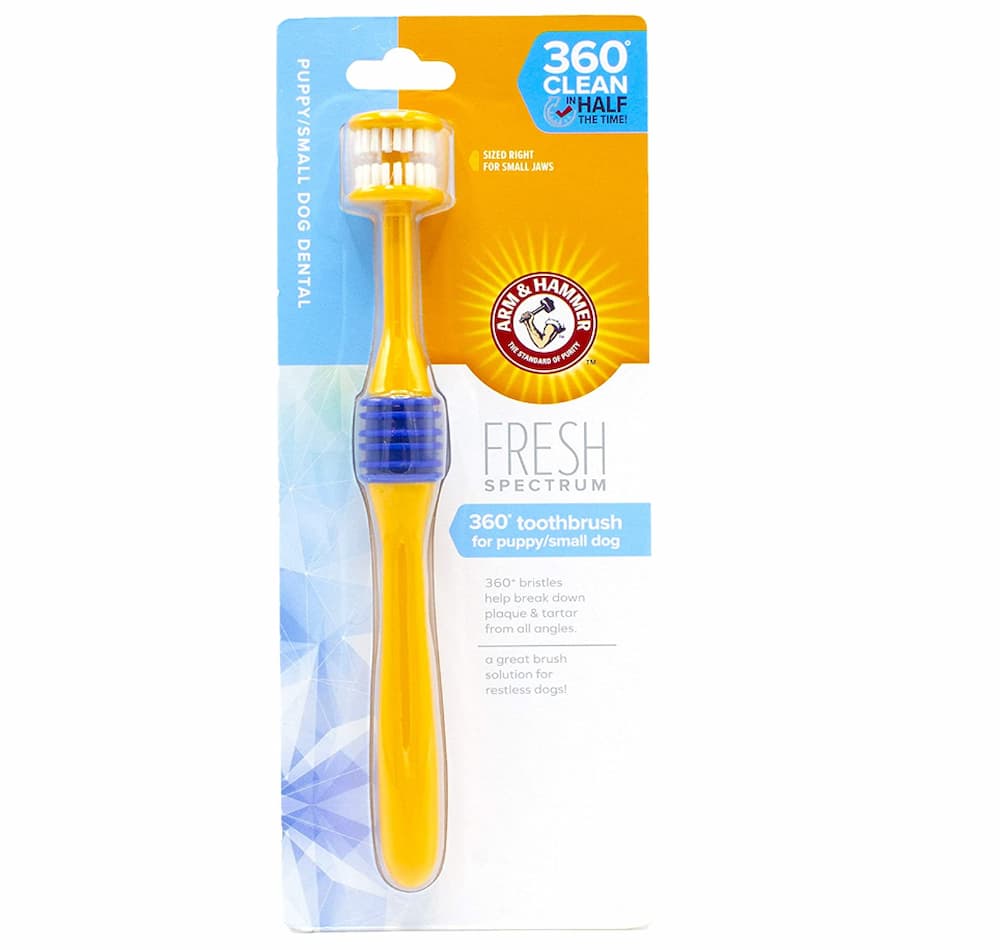
Arm & Hammer is a trusted name that’s been in business for more than 165 years. Their Spectrum 360 degree dog toothbrush is designed specifically to clean small mouths. While it doesn’t have a dual brush head, it can clean both top and bottom teeth simultaneously, which reduces cleaning time.
Dog toothbrushes for small dogs should should be effective inside a small mouth. We like that this toothbrush has a comfortable grip for pet parents. Thanks to the bristle type, your little pooch won’t have to worry about gum or tooth damage.
Highlights
- The toothbrush is designed for small mouths and teeth.
- It lets you clean both rows of teeth at the same time.
- It’s made by trusted Arm and Hammer.
Things to Consider
- It only has one brush head.
Best Puppy Toothbrush
Our Pick: Nylabone Advanced Oral Care Puppy Dental Kit
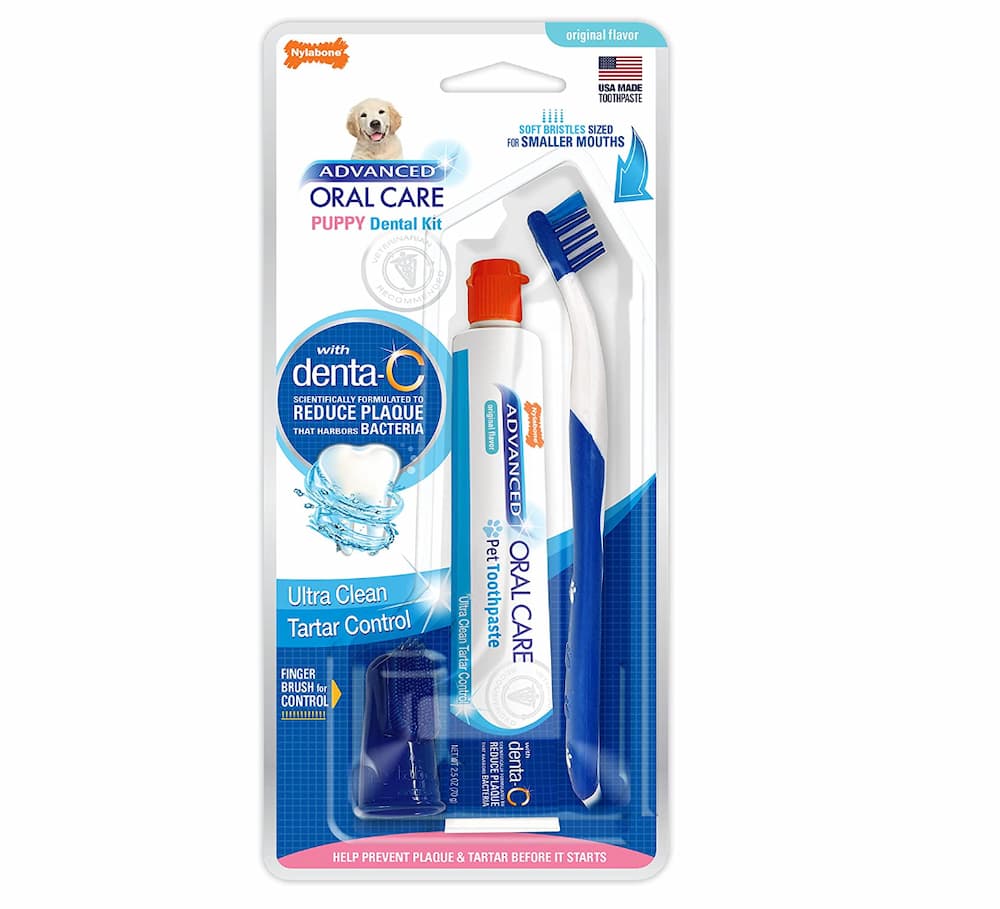
This angled soft-bristled puppy toothbrush is designed to clean between your dog’s teeth. The kit also includes a finger toothbrush for dogs; and toothpaste formulated with Denta-C, an ingredient designed to reduce plaque and tartar. The toothbrush for puppies has an angled neck for better reach, which pet parents will appreciate. The bristles are soft for your little one’s comfort and safety.
It’s made in the U.S. by Nylabone, a family business that’s been making durable dog chew toys since 1955.
Highlights
- Customers like the durability and ease of use.
- The kit includes a dog finger toothbrush, as well as plaque- and tartar-fighting toothpaste.
- It’s made in the U.S. by Nylabone.
- You can also consider this to be a Yorkie toothbrush or for use with smaller breeds.
Things to Consider
- The toothbrush doesn’t have a dual head.
Best Disposable Dog Toothbrushes
Our Pick: Vet’s Best Dental Care Finger Wipes

Imagine being able to take your oral care kit on the road or have a disposable finger wipe ready at any time, day or night. Vet’s Best offers finger wipes that easily slip onto your finger. Rub your dog’s teeth and gums in a circular motion, and let the product work its magic. Each wipe is infused with thyme oil and green tea extract for good oral hygiene.
Highlights
- Contains natural ingredients to reduce plaque build-up.
- Stores easily in a cool, dry place.
- Ideal for bad breath.
- Each container has 50 wipes, which is close to a 2-month supply.
- No struggle with a regular toothbrush thanks to the handy design.
Things to Consider
- For best results, do not allow food or water for 30 minutes before or 30 minutes after application.
- Fits most finger sizes.
Best Finger Toothbrush for Puppies
Our Pick: Jasper Dog Finger Toothbrush

When it comes to the best finger toothbrush for puppies. Jasper hits a home run. Made of 100 percent silicone-free material, they also contain no BPAs or phthalates. Whether you have small fingers or thicker fingers, add a few drops of water to help the silicone expand. It also creates a nice seal for smaller fingers so you can get your puppy used to the brushing process. We love the 360-degree design that cleans your pup’s mouth with a few swipes. When it comes to the best dog toothbrush for small breeds, the Jasper is high on our list.
Highlights
- Soft but abrasive bristles to remove plaque and get puppies used to the process
- Has 12 times more bristles than most standard finger toothbrushes
- Made without silicone for a safe experience
- Contains no BPA or phthalates
- Available in a variety of colors
- Each finger toothbrush comes in its own case to keep them clean
- Can be used on all sized dogs, too
Things to Consider
- Not made of the same material as a standard toothbrush
- Toothbrush for dogs and cats only
Best Dog Toothbrush Alternative
Our Pick: Oravet Dental Hygiene Chews for Dogs
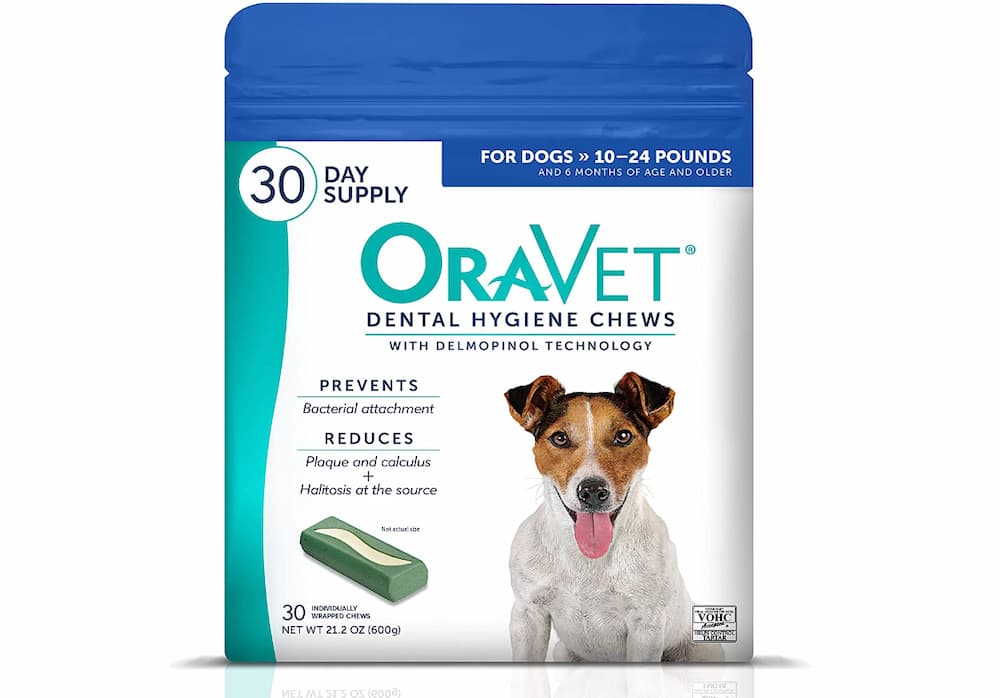
These dog dental chews contain delmopinol, a plaque fighting ingredient that helps stop bacteria from attaching to dog teeth. It also helps eliminate plaque when the dog chomps into it. They’re available in four sizes, from extra small dogs to those weighing more than 50 pounds.
Oravet Dental Chews are made in the U.S. by Boehringer Ingleheim, an animal health company founded in 1885.
Highlights
- The chew applies two methods to fight plaque.
- It’s easy and convenient to administer. There’s no brushing involved.
- They’re made in the U.S. by trusted Boehringer Ingleheim.
- The chews are available in four sizes.
Things to Consider
- The chews are intended for dogs 6 months and older.
- Veterinarians say dental chews are not as effective as brushing.
What is a Dog Toothbrush?
A dog’s toothbrush usually has softer bristles to clean all teeth and under the gumline without irritating the gums. The brush head is smaller than those on human toothbrushes, and they have longer handles to make it easier to reach inside all areas of the mouth.
Finding a toothbrush your dog tolerates can make brushing dog teeth a more enjoyable experience. “If you have to fight with your dog every time you brush their teeth neither of you will want to do it,” says Dr. Amber Karwacki, a partner doctor at Heart + Paw at their Callowhill, Philadelphia location.
Why Good Dog Oral Hygiene is Essential
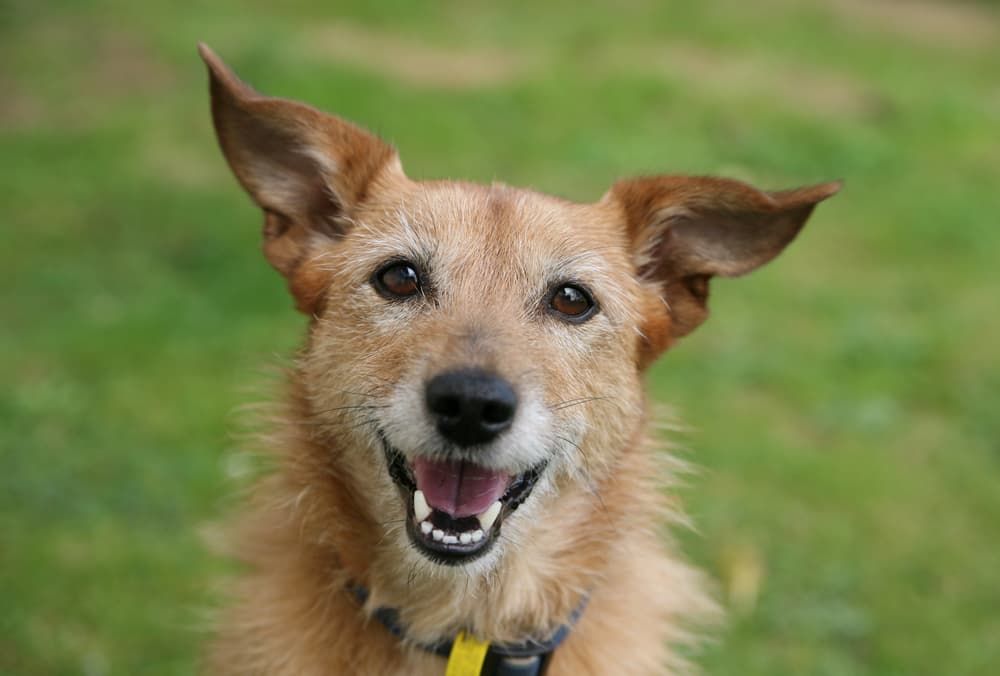
Regular brushing prevents the progression of periodontal disease. “Periodontal disease starts as gingivitis, an inflammation of the gums caused by accumulation of plaque, a film that develops after eating meals. When minerals and bacteria start to accumulate on this plaque, tartar develops and further damage to the teeth and tooth roots occur which can lead to pain, infection and loss of teeth,” explains Dr. Jerry Klein, chief veterinary officer for the American Kennel Club, based in New York City.
Plaque buildup can also impact your dog’s health. “Bacteria in this area can travel via the blood vessels to other organs, such as the kidneys and the heart and create damage to these organs as well,” adds Dr. Klein.
While regular brushing is the best way to combat plaque and tartar buildup, other pet dental products like dental chews, oral rinses, and special diets can help keep a dog’s mouth, teeth, and gums healthy between professional cleanings.
Professional Cleanings Are Important
Though brushing dog teeth is important for dental hygiene and overall health, “A non-veterinary professional is not a substitute for professional dental care performed by a veterinary-trained professional that has been educated on how to recognize dental and oral disease and what the appropriate treatment options are,” says Denise Rollings, a veterinary technician specialist (dentistry), and founder of Pet Dental Education, LLC.
Annual dog teeth cleanings are essential. “Professional teeth cleanings are able to clean under the gumline and all surfaces of the teeth – the areas that are difficult to do with just a toothbrush,” says Dr. Ashley Barnes, medical director at Louisville Family Animal Hospital in Louisville, Colorado. ”This deep cleaning keeps the gums healthy and helps to prevent periodontal disease.”
Testing Your Dog’s Oral Health at Home
For hands-on pet parents who enjoy caring for their dog’s oral health, consider investing in the Embark Oral Health Test Kit. This at-home test analyzes your dog’s mouth bacteria. Doing so will give you an overall assessment and how to improve your dog’s oral care.
Bad breath, gum disease, tooth loss, and other health complications can stem from poor oral health. An imbalance in the gut microbiome, where harmful bacteria thrive, can contribute to this issue. This connection between gut health and dog breath explains why addressing microbiome imbalances is key to fresher, healthier dog breath.
Embark’s Oral Health test requires the pet parent to swab over the dog’s gumline, return the sample in a provided postage-paid envelope, and wait 2 to 3 weeks for results. This will help guide your oral care regimen as part of toothbrushing, prebiotics, and dental cleanings.

How We Chose Our Top Dog Toothbrushes
We asked veterinarians and veterinary dental technicians for their recommendations, then scoured a variety of sources, including verified online customer reviews and recommendations from the Veterinary Oral Health Council (VOHC), an organization that recognizes products to be effective in reducing plaque and tartar.
Our criteria is based on a number of factors, including toothbrush design (soft bristles are a must), durability, value, and company reputation.
Dog Toothbrush Buyer’s Guide
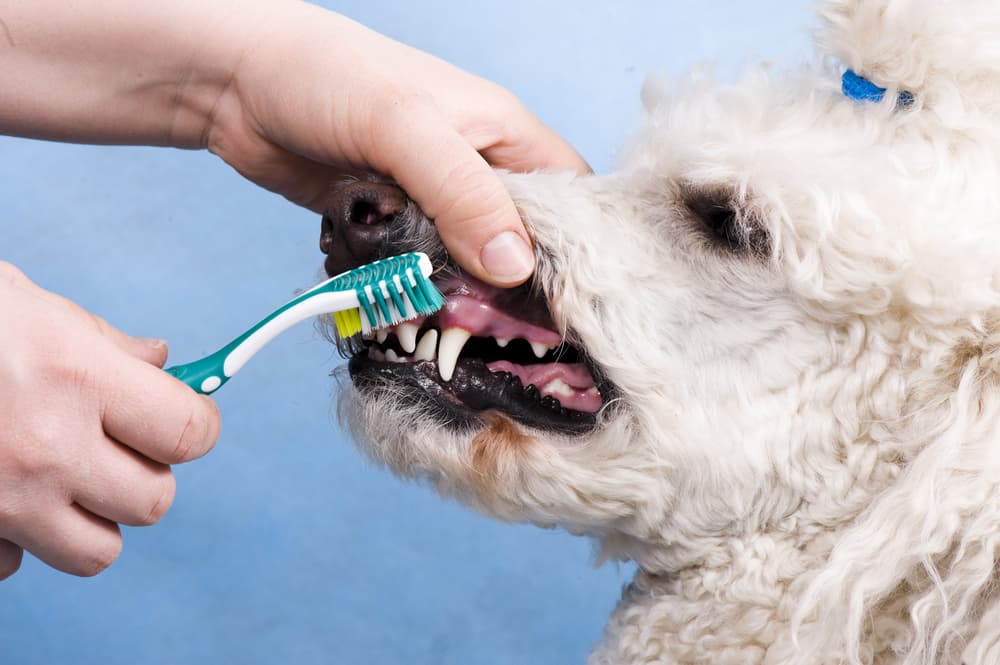
When you’re shopping for a dog toothbrush, there are a few things you should keep in mind and consider before making a purchase. Here are some guidelines from veterinarians and veterinary technicians:
Materials and Design
The bristles should be soft to prevent gum irritation and flexible enough to reach under the gumline. “Look for a dog toothbrush that is safe and durable using materials that don’t break easily,” says Dr. Klein. “The toothbrush should have a relatively long handle and specially angled head and neck to reach all teeth and clean back surfaces. The best dog toothbrushes have bristles made using pet safe materials and are food grade and FDA approved.”
The Correct Size
Toothbrushes for dogs come in a variety of sizes to make it easier to reach all dog teeth, as well as to accommodate different dog sizes. “Smaller dogs should be given a smaller brush while medium and larger breeds should have a bigger brush,” says Dr. Karwacki.
Company Reputation
One good way to check a company’s reputation is via the VOHC website. “They have a list of products, including toothpastes, dental chews, diets, treats, and water additives, that have been tested to show that they reduce plaque or tartar or both,” says Rollings.
(Not all of our recommended dog teeth cleaning products are listed on the VOHC site.)
Dog Tooth Brushing FAQ
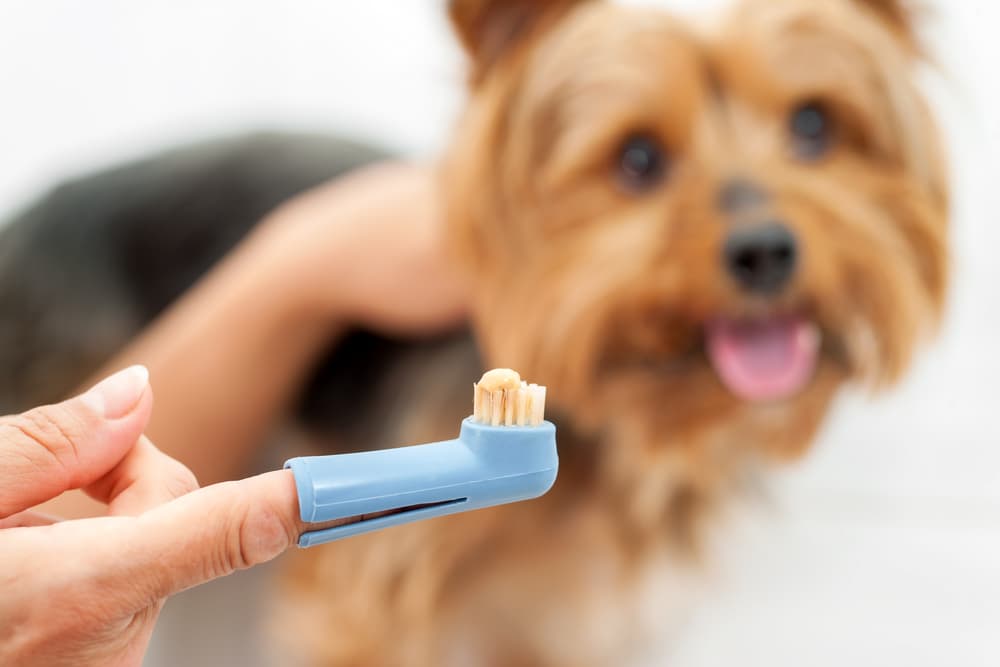
How often should you brush your dog’s teeth?
Regular brushing is key to maintaining good oral hygiene, says Dr. Klein. “Brushing once a day is ideal, as plaque develops within hours of a meal. Once it becomes part of a dog’s daily routine, many dogs learn to expect it and enjoy it. If daily brushing is not an option, brushing three times a week is the minimum to prevent plaque buildup and tartar accumulation.”
Dr. Karwarcki recommends introducing brushing gradually. “When you start tooth brushing, go slow and only do a few teeth at a time. As your dog becomes more accepting of it you can gradually do more teeth at a time.”
How do you brush a dog’s teeth?
Aim for the outside of each tooth, as well as the gumline where dental disease begins, recommends Barnes. “It is best to start slow. First put some toothpaste on your finger and rub it against a few teeth,” she says. ”Once the pet is ok with this, increase the number of teeth you rub. Once the dog is letting you rub all the teeth with your finger, restart with the toothbrush and toothpaste. Brush a couple of teeth the first time and work your way up.”
Is toothpaste bad for dogs?
Human toothpaste is bad for dogs. You should always use a toothpaste specifically formulated for pets. “Human toothpaste should never be used on a pet as they contain fluoride and xylitol, an artificial sweetener, that are toxic to dogs,” says Dr. Klein. “Read labels carefully and use only toothpaste formulated to be safe when used on pets.”
When should I start brushing my puppy’s teeth?
A finger toothbrush for puppies is a great place to begin. A toothbrush for small dogs can also be considered.
Begin the process by gently touching puppy teeth as early as 8 or 9 weeks, says Dr. Klein. “But it should be done as a fun session. A puppy’s mouth can be sore during the teething process (4 to 5 months of age) so it is safest to wait until a puppy is about 6 months of age gently using finger brushes or small toothbrushes made for puppies.”
Getting a puppy comfortable with the brushing process ensures long-term success. You want the entire process to be fun, rewarding, and never unpleasant. Associate the finger toothbrush for your puppy with a positive experience, such as with treats or praise.
Let your puppy sniff at the finger toothbrush. You can even allow the pup to lick a bit of the pet-safe toothpaste so they know it’s a ‘good thing.’
Dog Tooth Brushing: Tips for Success
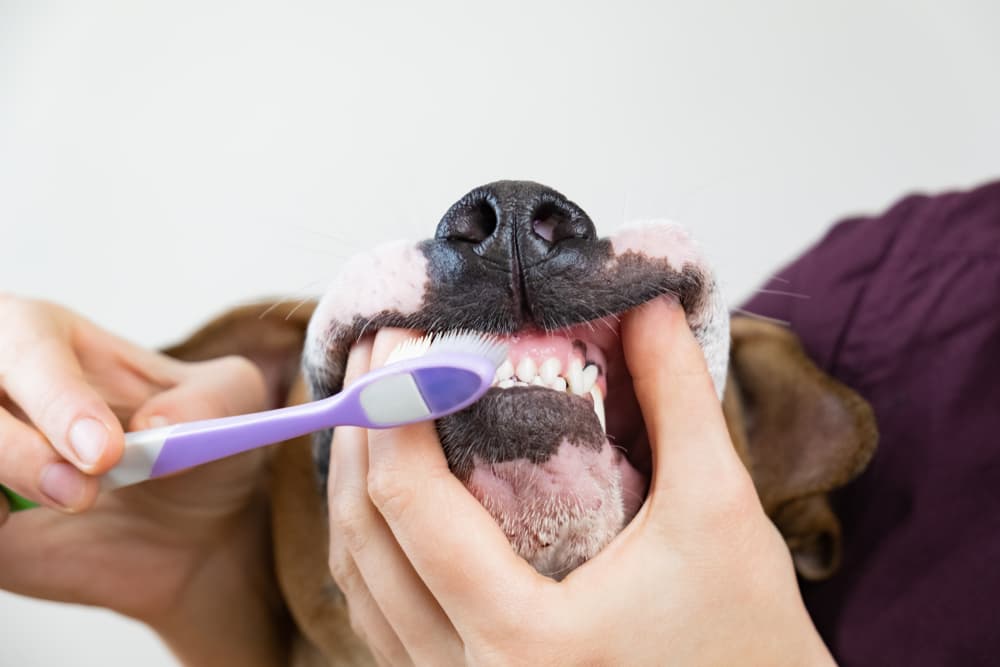
To make sure you succeed at brushing your dog’s teeth, follow these suggestions and recommendations:
Use a toothbrush appropriate for your dog. Finding a toothbrush your dog likes can make or break the cleaning experience. Choose one with soft, flexible bristles to prevent gum irritation, and a longer handle to allow each access to all teeth. The brush head should be appropriate to your dog’s size.
Develop a regular brushing routine. The ideal is to brush dog teeth daily. If not possible, aim for a minimum of three times each week.
Avoid using human toothpaste. Human toothpaste contains ingredients that are toxic to dogs. Instead, opt for toothpaste formulated for pets.
Take your dog in for annual professional cleanings. A veterinary professional can perform a dental examination, treat any issues, and clean areas that are not as easily accessible with a toothbrush. Brushing a dog’s teeth helps prevent periodontal disease, but it can’t treat it if it’s already formed.
Be patient. It can take time for your dog to become accustomed to brushing, and for you to learn proper brushing technique. If the experience is too stressful for your dog, ask your veterinarian if alternatives like dental chews or diets, rinses or water additives, or if dog finger toothbrushes are appropriate.

